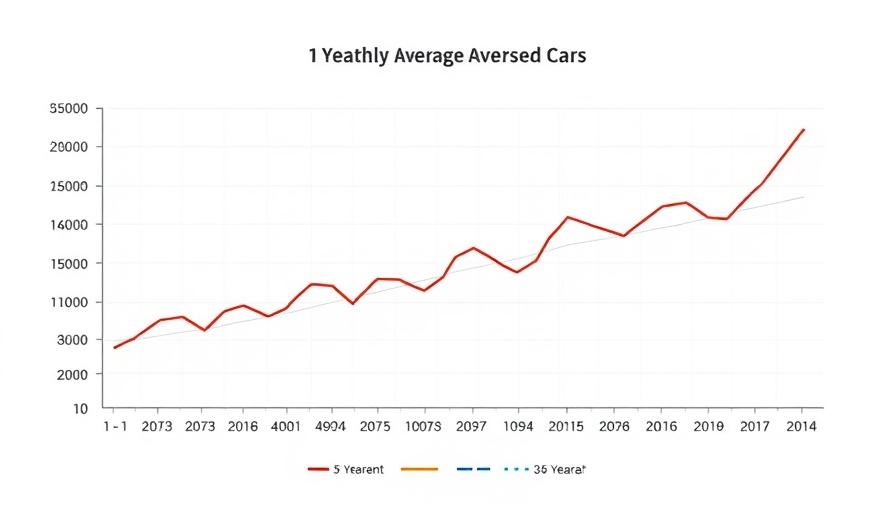
Are Rising Used-Car Prices Here to Stay?
After two and a half years of decreases, the used-car market is witnessing its first year-over-year price rise, creating a ripple of concern across dealerships and potential buyers alike. iSeeCars, an automotive search engine, reported a 1% increase in the average listing price of used vehicles from March 2024 to March 2025, marking a notable shift in a market that saw prices consistently falling until now. This uptick isn't merely a blip on the radar; it may herald more substantial price increases due to looming tariffs and market dynamics that echo the price spikes experienced during the COVID-19 pandemic.
The Tariff's Effect: What Dealerships Need to Consider
ISeeCars executive analyst Karl Brauer noted that the recent increase of $317 in average used-car prices comes just before a significant 25% tariff on imported vehicles is slated to take effect. This correlation is critical for dealerships to consider; as new-car prices rise due to tariffs, the used-car market could see similar inflation. Historical comparisons to the pandemic reveal a frightening precedent where used-car prices surged by over 8% between March and November 2020. Current predictions indicate that the tariff could lead to a price surge in the range of $1,300 to $3,800, depending on the vehicle segment.
Supply and Demand: The Driving Factors Behind Price Changes
As Brauer aptly points out, the used-car price increase can largely be attributed to a tightening supply in the market. With many consumers gravitating towards used vehicles in light of rising new-car prices, this creates a feedback loop: higher demand coupled with limited supply naturally drives prices up further. In contrast, other sectors like electric vehicles have seen a dramatic drop in used prices, with a reported decrease of $3,602 in the last year. This segmentation suggests that various automotive markets can react differently based on supply chain issues and consumer interest.
What This Means for Dealership Owners and GMs
For dealership owners and General Managers, it is crucial to assess how these market changes impact inventory strategy and sales tactics. The potential for rising prices presents an opportunity for dealerships to recalibrate pricing strategies and marketing approaches. As buyers shift towards used vehicles, emphasizing value and offering competitive pricing can attract a wider customer base. Additionally, understanding market trends could facilitate better decisions on inventory acquisition and sales forecasting.
Predictions for the Future: Are We in for More Surprises?
While the current uptick may be unsettling for buyers, it also raises questions about the stability of used-car prices moving forward. If new-car prices continue to rise due to tariffs, the impact on used-car prices could be significant. Analysts predict that as new cars become less attainable for many, the demand for mid-range used vehicles and compact models may surge, potentially pushing prices even higher.
The current climate is characterized by uncertainty, and for dealership owners who thrive on understanding market trends, leveraging data can provide a competitive edge. As we enter a new phase in automotive sales, staying informed will be key.
Why Understanding These Trends Is Essential
Staying abreast of these changing dynamics is essential for all stakeholders in the automotive market. For dealerships, understanding that rising costs can affect customer spending power allows for better customer relationship management and pricing strategies. Whether it's preparing for an influx of buyers in the used-car sector or reassessing sales tactics, this latest trend serves as a critical reminder that adaptability is vital in the fast-paced automotive landscape.
 Add Row
Add Row  Add
Add 




Write A Comment